How Precise is Laser Cutting and Why It Matters
Laser cutting is one of the most popular and advanced ways to cut metal, wood, plastics, and many other materials in modern manufacturing. But when it comes to making precise parts, especially for machines, vehicles, or custom projects, accuracy becomes a top concern.
So, just how accurate is laser cutting? Can it really cut complex shapes with perfect detail? Is it the best method when compared to others, such as CNC machining or plasma cutting?
In this article, we’ll explain what makes laser cutting accurate, what factors affect the precision, and how you can get the best results from this technology.
What Is Laser Cutting?
Laser cutting is a process where a high-powered laser beam is used to cut or engrave materials. The laser melts, burns, or vaporizes the material, creating a clean and detailed cut.
This process is controlled by a computer, which follows a digital design file. This means that every movement of the laser is precise down to fractions of a millimetre.
Laser cutting is widely used for making metal parts, signs, electronic components, custom tools, and more. It works especially well on materials like:
- Stainless steel
- Mild steel
- Aluminium
- Plastics
- Acrylic
- Wood
Learn more about laser cutting in our separate blog.
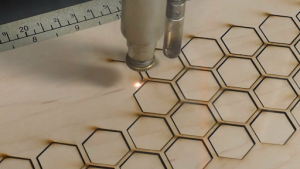
How Accurate Is Laser Cutting?
Now, let’s talk about the key question: how accurate is it really?
Laser cutting is known for being extremely accurate. In most cases, it can cut within ±0.1 mm of the desired measurement. Some high-end machines can even reach tolerances of ±0.05 mm or better, depending on the material and thickness.
To put that in perspective, a standard human hair is about 0.06 mm thick, so laser cutting can be as accurate as the width of a hair.
What Affects Laser Cutting Accuracy?
Even though laser cutting is very precise, a few factors can affect how accurate the final cut is. Here are the most important ones:
Material Type and Thickness
Thinner materials are usually easier to cut accurately. On thicker metals (like 10mm steel), the laser has to burn longer, which can slightly widen the cut line. Learn more about the best laser cutting material and thickness here.
Laser Machine Quality
High-end machines have better optics, stronger control systems, and finer laser beams. Older or low-quality machines may not cut as sharply.
Cutting Speed
Cutting too fast can reduce accuracy, especially on corners or detailed shapes. Slower, controlled cuts give better results.
Heat Control
Laser cutting creates heat, and too much heat can warp or slightly melt the edges. Professional operators use cooling or gas-assist methods to control this.
Focus and Calibration
Like a camera lens, the laser has to be properly focused. A tiny misalignment can reduce the precision. That’s why frequent calibration is important.
How Does Laser Cutting Compare to Other Methods?
Here’s a quick comparison with other cutting methods to show why laser cutting is often preferred for high-precision work:
| Method | Accuracy | Best For |
| Laser Cutting | ±0.1 mm | Detailed parts, clean edges |
| CNC Machining | ±0.01 mm | Complex 3D shapes, deep cuts |
| Plasma Cutting | ±1–2 mm | Thick steel, less detail |
| Waterjet Cutting | ±0.2 mm | Materials sensitive to heat |
While CNC machining can be even more accurate for 3D parts, laser cutting is faster and cleaner for flat parts or sheet materials.
Why Accuracy Matters in Manufacturing
Laser cutting is also essential in many metal fabrication projects, where different cutting and shaping methods come together to build complete assemblies. If one metal part is too long or a hole is too small, it might not fit during assembly. That’s why precision is critical in industries like:
- Automotive (engine parts, body panels)
- Aerospace (lightweight and accurate metal components)
- Electronics (tiny connectors, brackets)
- Construction (frames, beams, signage)
- Medical (surgical tools and instruments)
Laser cutting helps ensure these parts fit perfectly every time.
How Kirmell Ensures Laser Cutting Accuracy
At Kirmell Ltd, we understand how important accuracy is for your project, whether it’s a one-off prototype or a high-volume production run. That’s why we invest in advanced CNC-controlled laser cutting machines and regularly maintain them to ensure top performance.
Our skilled technicians carefully calibrate the lasers, check every design file, and inspect parts for accuracy before delivery. Whether you need thin aluminium panels or intricate stainless steel parts, we deliver consistent, high-precision results.
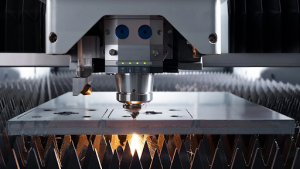
Kirmell’s Laser Cutting Services
Looking for a reliable laser cutting supplier in the UK? At Kirmell Ltd, we offer fast, cost-effective, and accurate laser cutting services for clients across various industries.
Our services include:
- Laser cutting of mild steel, stainless steel, and aluminium
- Sheet thickness from 0.5 mm to 25 mm
- Quick turnaround times and small or large batch support
- Custom designs with CNC precision
- In-house quality control and material sourcing
Whether you’re based in the UK, EU, or abroad in Asia or China, our team is here to support your cutting needs from start to finish.
Get in touch today at [email protected] or visit our contact page to request a free quote.
Tips to Get the Best Accuracy in Laser Cutting
Want the most precise results from your laser cutting job? Here are a few simple tips:
- Provide clean and detailed design files (like DXF or DWG formats)
- Specify material type and thickness clearly
- Mention any tight tolerances or special instructions
- Choose a supplier who uses CNC-controlled laser cutters
- Ask about post-processing (such as deburring or finishing)
These steps help ensure the finished parts match your exact specifications.
Conclusion
Laser cutting is one of the most accurate and efficient methods for shaping sheet metal and other materials. With tolerances as tight as ±0.1 mm, it’s perfect for parts that need clean edges, fine details, and consistent quality.
At Kirmell, we make sure every project big or small meets your expectations in terms of accuracy, speed, and reliability. If you’re looking for a dependable partner for laser cutting, we’re ready to help.
FAQs
- What is laser cutting accuracy, and why does it matter?
Laser cutting accuracy refers to how closely a laser-cut part matches the original design or dimensions. It matters because even tiny errors can affect part fit, assembly, or product performance, especially in industries like automotive, aerospace, and electronics.
- How accurate is laser cutting for manufacturing?
The accuracy of laser cutting in manufacturing can reach as precise as ±0.05 mm, depending on the machine and material. This level of accuracy makes it ideal for producing detailed metal parts that need a clean finish and reliable fit.
- What is the typical CO2 laser cut accuracy?
A standard CO2 laser cutter offers accuracy of around ±0.1 mm, which is sufficient for many general applications such as signage, plastic cutting, and decorative metalwork. For tighter tolerances, fiber lasers or CNC-controlled systems are usually preferred.
- How does CNC laser cutting accuracy compare to other cutting methods?
CNC laser cutting accuracy is superior to traditional cutting methods like plasma or mechanical sawing. With CNC control, the laser path is guided with extreme precision, allowing for clean, repeatable cuts on complex shapes with tolerances as tight as ±0.05 mm.
- Is laser cutting better than CNC machining for accuracy?
CNC machining can offer tighter tolerances for complex 3D shapes, but laser cutting is usually more efficient and precise for flat, 2D parts and faster for large-volume production with clean edges and minimal waste.
- Does laser cutting damage the material?
No. Laser cutting is a non-contact process, meaning it doesn’t physically touch the material. It uses heat, which is controlled to avoid warping or burn marks, especially when using assist gases or cooling systems.

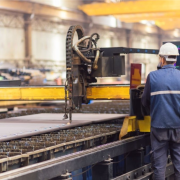
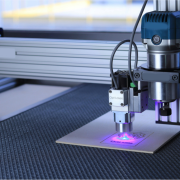
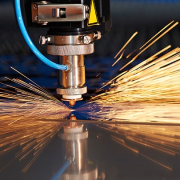
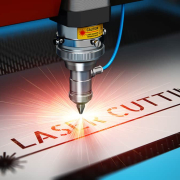
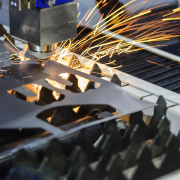
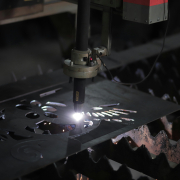
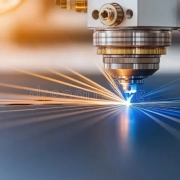
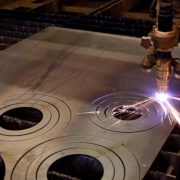



Leave a Reply
Want to join the discussion?Feel free to contribute!